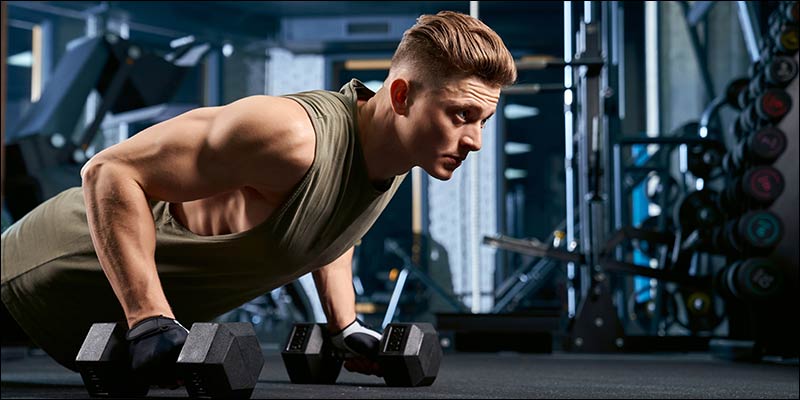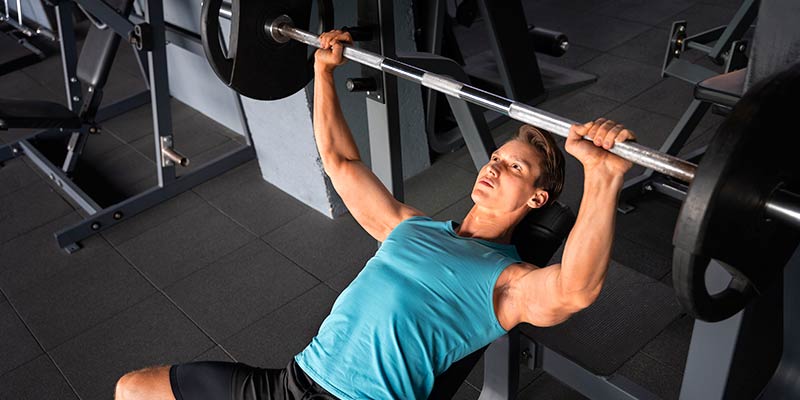A well-built chest is often a symbol of strength and fitness. To achieve a robust and developed chest, incorporating compound chest exercises into your workout routine is crucial. These exercises target multiple muscle groups simultaneously, providing an efficient way to build strength and muscle mass in the chest area.
Understanding Compound Exercises
Compound exercises involve multiple joints and muscle groups, working together to perform a movement. Unlike isolation exercises that focus on a single muscle, compound exercises engage various muscles simultaneously, making them highly effective for overall strength and muscle development.
Importance of Compound Chest Exercises
Compound chest exercises offer several benefits, including maximizing muscle engagement, improving functional strength, and enhancing overall fitness. These exercises recruit the chest muscles along with secondary muscles, leading to comprehensive muscle growth and development.
Best 6 Compound Chest Exercises

The most effective compound chest exercises involve the engagement of shoulders, back, and triceps, offering a focused upper body workout that enhances both strength and muscle mass. The chest muscles consist of the pectoralis major and pectoralis minor. Despite the relative simplicity of chest anatomy, its interaction with the intricate shoulder structure is notable. The chest plays a crucial role in arm movement, flexion, and adduction, especially during pushing exercises.
Outlined below are six top-notch compound chest exercises to incorporate into your chest-focused training routines.
1. Bench Press
The bench press is a quintessential compound exercise, targeting the chest, shoulders, and triceps. It involves pressing a weight away from the body while lying on a bench, stimulating significant chest muscle activation.
2. Push-Ups Variations
Push-ups are versatile and effective compound exercises that engage the chest, shoulders, and triceps. Variations like wide-grip, diamond, or decline push-ups target different parts of the chest muscles.
3. Dumbbell Flyes
Dumbbell flyes isolate the chest muscles, providing an effective stretch and contraction. It enhances chest development and strength by targeting the pectoral muscles.
4. Chest Dips
Chest dips primarily target the lower chest and triceps. Using parallel bars, this compound exercise engages multiple muscles, contributing to chest development.
5. Incline Bench Press
This variation of the bench press focuses on the upper chest. Performing incline bench presses helps in achieving a well-rounded chest development.
6. Cable Crossovers
Cable crossovers involve a pulley system and help in isolating the chest muscles, providing a controlled range of motion to strengthen and define the chest.
Benefits of Compound Chest Exercises
The benefits of incorporating compound chest exercises into your routine are vast. They include:
- Efficient muscle activation
- Enhanced muscle growth
- Improved strength and power
- Time-saving workouts
- Increased calorie burn
Chest Compound and Isolation Exercises

Compound exercises, also referred to as multi-joint movements, engage multiple muscle groups simultaneously by involving two or more joints. Take the flat barbell bench press, for instance, which targets the chest, shoulders, triceps, serratus anterior, and midsection, engaging both the shoulder and elbow joints.
Because compound exercises recruit more muscles, they allow for training with heavier weights, fostering more consistent progress and building long-term strength.
In contrast, isolation exercises focus on single-joint activities, aiming to train a specific muscle group involving just one joint.
An example of an isolation exercise is the flat dumbbell chest fly, which, when executed correctly, emphasizes the chest and activates the shoulder joint.
Proper Form and Techniques
Maintaining proper form during chest exercises is essential to prevent injury and maximize results. Ensure a controlled movement, proper breathing, and suitable weights to avoid strain.
Compound Chest Exercises at Home
Dumbbell Chest Press
This exercise requires dumbbells and a bench or stability ball. Lie down, holding the dumbbells above your chest, and press them upward while maintaining control. This movement effectively engages the pectoral muscles while incorporating the stabilizing muscles of the shoulders and arms.
Chest Flyes
Perform chest flyes using either dumbbells or resistance bands. Lie on a bench or floor, holding the weights above your chest, and lower them out to the sides in a controlled manner, engaging the chest muscles. This exercise strengthens the chest while improving flexibility.
Common Mistakes to Avoid
Avoiding common mistakes like improper form, lifting excessive weight, and neglecting warm-ups can significantly reduce the risk of injury and improve exercise effectiveness.
Designing a Compound Chest Workout Routine
Creating a well-structured workout routine that includes a variety of chest exercises ensures balanced development and continuous progress.
Combining Compound Chest Exercises with Other Workouts
Incorporating chest exercises into a comprehensive workout plan alongside other muscle groups leads to a well-rounded fitness regimen.
Conclusion
In conclusion, compound chest exercises are fundamental for enhancing chest strength and size. Incorporating these exercises into your workout routine leads to comprehensive muscle development and overall fitness improvement.
FAQs
Q1. What is a compound workout for chest?
Compound exercises for the chest encompass the push-up, Dumbbell Flyes, and barbell bench press, which are considered isolation exercises.
Q2. Are 5 compound exercises enough?
Nevertheless, the ideal number of exercises can vary based on your activity and energy levels throughout the day. Some individuals may find that doing five or more exercises suits them well. It’s crucial to aim for at least two exercises per muscle group and adequate sets per week to effectively train each muscle group twice within the week.

